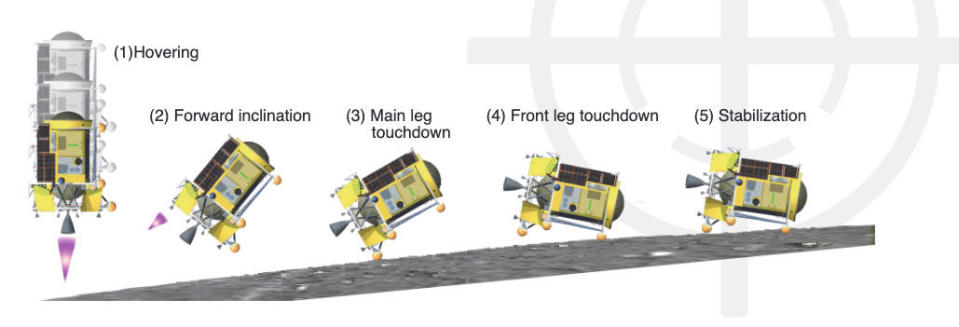Less than a day after a crippled commercial U.S. moon lander fell back to Earth and burned up the atmosphere, the Japanese space agency attempted its first robotic moon landing Friday. While telemetry indicated the spacecraft reached the surface, it was not immediately known if it survived the trip.
The Japan Aerospace Exploration Agency, or JAXA, launched the innovative Smart Lander for Investigating Moon, or SLIM, spacecraft Sept. 7 from the Tanegashima Space Center in southern Japan. The 1,600-pound probe slipped into an initially elliptical orbit around the moon’s poles on Christmas Day and transitioned to a circular 373-mile-high orbit earlier this month.
Friday morning U.S. time, the spacecraft began its final descent to the surface from an altitude of about 9 miles. Realtime telemetry showed the vehicle precisely following the planned trajectory, pausing several times to photograph the surface below and compare the view to on-board maps to ensure a high-precision landing.
The final stages of the descent appeared to go smoothly. SLIM flipped from a horizontal-to-vertical orientation right on time and slowly dropped toward the surface. It was programmed to release to micro rovers just a few feet before touching down using an unusual two-step procedure.
Designed to land on a slope, the probe’s two rear legs were expected to touch down first. The spacecraft then was designed to tilt forward slightly, bringing its front legs down. Telemetry indicated a landing at 10:20 a.m. EST. But there was no immediate signal from the spacecraft confirming its health.

“We’re still checking the status, so please wait,” a landing commentator said. After several more minutes, the webcast ended. A news conference was planned later in the day.
In a hopeful sign, NASA’s Deep Space Network, which sends commands and receives data from spacecraft across the solar system, was receiving telemetry from either SLIM or one of the tiny rovers more than a half hour after landing.
Only the United States, Russia, China and India have successfully landed spacecraft on the moon. Three privately-financed missions have been launched, but all three failed.
Most recently, the Peregrine lander built by Pittsburgh-based Astrobotic was stranded in a highly elliptical Earth orbit after a valve malfunction caused a propellant tank to rupture shortly after launch Jan. 8. Company flight controllers directed the spacecraft to fall back into Earth’s atmosphere where it burned up Thursday afternoon.
Police bodycams roll as man describes what happened before girlfriend stops breathing
Spelman College receives historic $100 million donation
Health information disclosed on King Charles and Princess Kate
Signup bonus from




